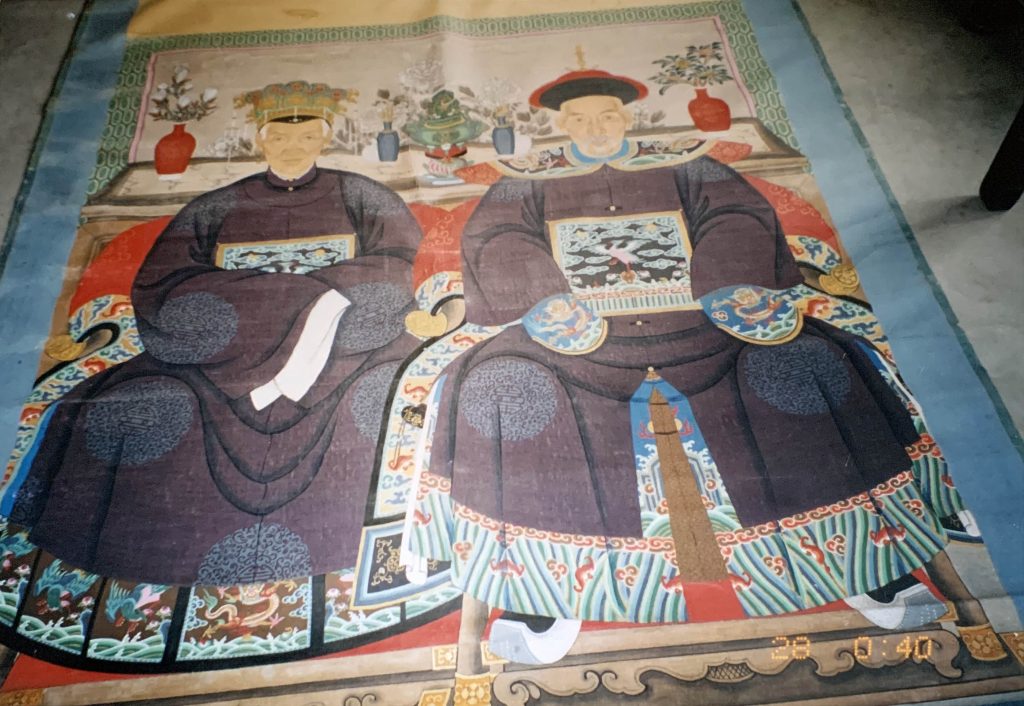19th Century; raw silk fabric, ink colors, gold powder; h.7′, w. 66″
This portrait depicts a royal couple sitting for a formal portrait. The official hat-dress, embroidered collar and cuffs on the gentleman, the crown on the lady, and the silk rank badges with auspicious symbol of a phoenix on their robes, all signify this couple has a high official status. They sit on armchairs draped with embroidered seat covers, with feet resting on waisted ‘foot-rests’ with an apron of beaded carvings of cloud-heads and curved yoke ends in upturned “ruyi” motifs. The “ruyi” is a wish-granting scepter which also signifies immortality as it resembles the “lingzhi” fungus of immortality. In the background is shown an antique incense burner and flowers arranged in porcelain vases.
A formal portrait like this was always painted by a specially trained court portrait painter, with every feature of the subject correctly sized. What is special about this one is that each couple’s face was directly painted on raw silk instead of, as often the case, on rice paper first and then imposed on facial space on the fabric so as not to make mistakes and ruin the whole portrait. The gold on the painting is actual gold powder, further showing this is an important portrait commissioned for an important couple.
This ancient portrait shows frayed edges on the border fabric lining. Its huge size and wooden rods inserted into the upper and lower ends, makes it likely the portrait was meant to be hung in a palace. This portrait would be considered rare today because not many royal portraits survived The Chinese Cultural Revolution when any dynastic painted figures were destroyed.
